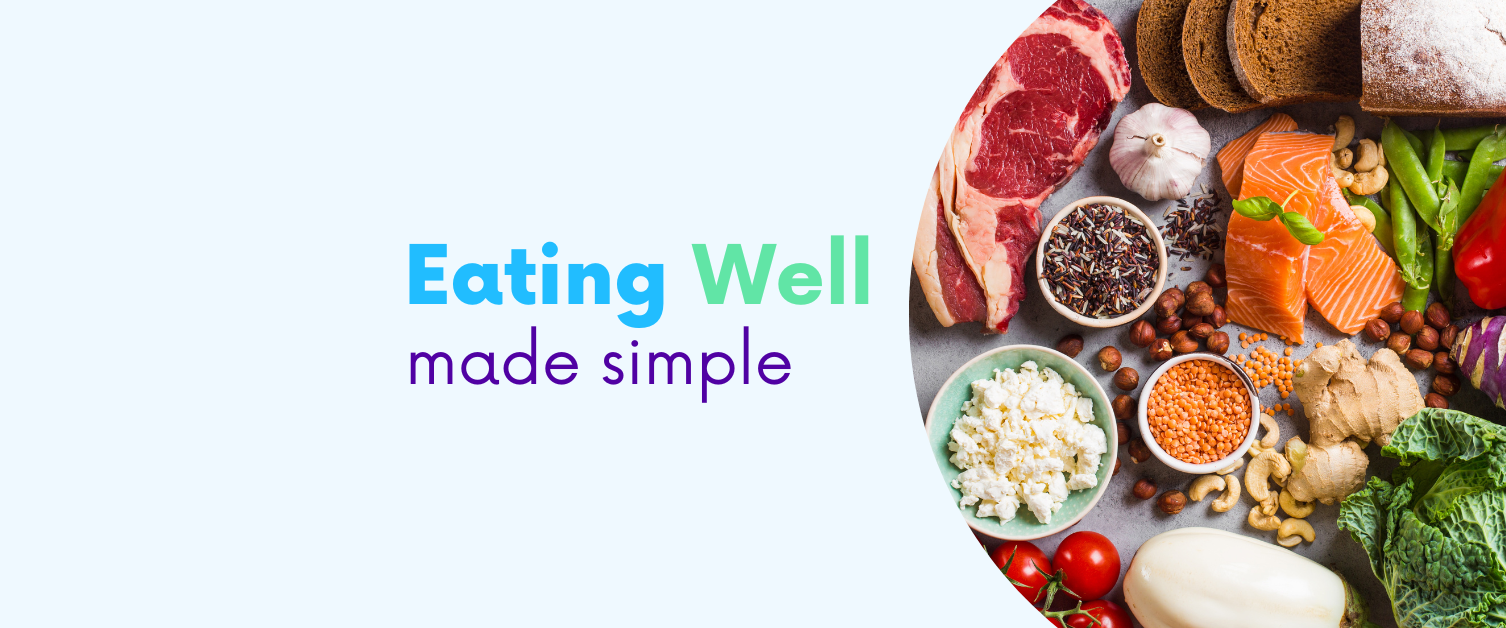Eating Well Made Simple

Eating well is not about cutting out foods or following a special diet, all foods can be included, but getting the balance right is the most important part. Eating a variety of foods from the ‘Five Food Groups’ (see below) and the right amount of food are needed to have a well-balanced, healthy diet and maintain a healthy bodyweight.
The Eat Well Guide breaks down the ‘Five Food Groups’ and gives you an idea about portion size and getting the right balance of nutrients - this will look different for everyone – it’s not a ‘one size fits all’ approach.
Further information can be found: Eatwell Guide (gov.wales)
It might be hard to achieve this balance with every meal that you eat, but getting this balance right over a day or even a week is a step in the right direction.
- Eating at least 5 portions of a variety of fruit and vegetables a day; these can be fresh, frozen, tinned / canned (in their natural juice or water with no added sugar or salt), dried or juiced (limit the combined total to 150ml a day to reduce the risk of tooth decay).
- Starchy foods that are high in fibre such as potatoes, bread, rice or pasta. Try and opt for wholegrain varieties where possible (brown rice, wholewheat pasta).
- Eating foods that are high in protein. Peas, lentils, pupils, and beans or lean cuts of meat and mince or eggs. Where possible, aim for at least two portions of fish every week. Tofu and Quorn are meat alternatives.
- Milk and dairy foods are an important source of calcium which can keep your bones healthy. Non-dairy alternatives such as soya drinks and yoghurts.
- Unsaturated fats such as vegetable, olive or sunflower oils, eaten in small amounts (instead of saturated fats such as butter, lard or ghee). Nuts and seeds that are rich in omega-3 fatty acids.
When on a vegan diet, add some fortified foods or supplements such as vitamin D, vitamin B12, iodine, selenium, calcium or iron to your food choices.
The Eat Well Guides have been adapted to suit some cultures and ethnicities.
Follow the below links for the:
Your activity levels, age, height and weight play a role in the amount of energy (calories) we need from food and drinks to be a healthy weight. The number of calories in the food and drinks you consume are part of the traffic light labelling system.
When trying to lose weight it is recommended that you should aim to reduce your daily calorie intake by about 600kcal, but again this depends on your activity levels, age, height and weight. You can use a TDEE Calculator – Total Daily Energy Expenditure – to calculate the number of daily calories needed to maintain weight, lose weight or gain weight.
If you have a health condition, are on long-term medications, pregnant or breastfeeding and are considering losing or gaining weight, consult with your Pharmacist, Midwife, Health Visitor or other health professional before making any changes to your estimated number of daily calories.
Free NHS Apps
There are a range of free NHS apps that can help you to introduce small changes to support you with your journey to eating well;
NHS Food Scanner App; you can scan the barcodes on the food and drinks packaging to see the healthier options available, the traffic light ratings and whether your item earns a ‘Good Choice’ badge on the app
NHS Weight Loss Plan; as 12-week plan where you can plan meals, make healthier food choices and record your activity and progress. If you are looking to lose weight, you can set weight loss goals and track your calorie intake.
Easy Meals; discover healthier versions of the foods you love by providing you with easy meal ideas, tips and advice on how to cook healthy, as well as create shopping lists. All the recipes are calorie counted and can be saved to access later.
These apps can be downloaded via the Google Play App and the App Store.